Somewhat Miserable, Somewhat Fantastic
Stephen Gladieux on a damp, dark Christmas spent in China’s remote Yantangping Cave.
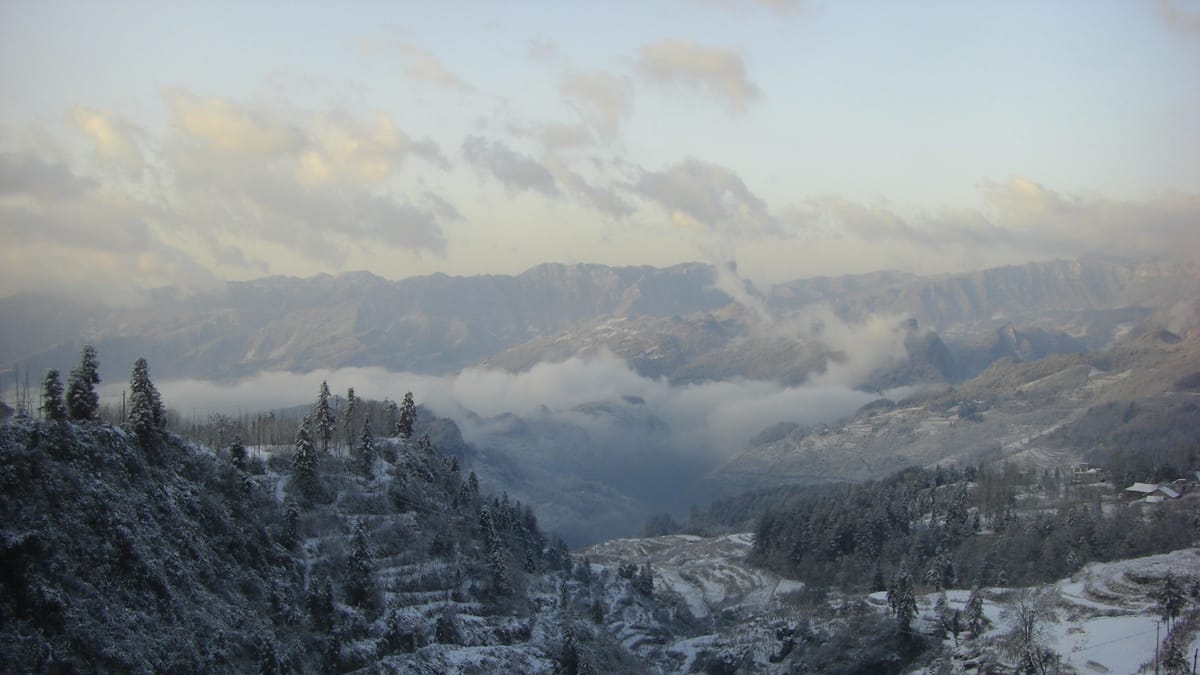
When we think of “death” we think permanence. The death of a coral reef, the death of a glacier, the death of a person, means they aren’t coming back. Ever.
In the caving world, however, when a cave “dies,” it only means the cave is over for humans. It gets too small, is filled with water, or choked with rubble. According to expert caver and climber Stephen Gladieux, however, “Oftentimes it’s not really the cave that ends. People’s determination just runs out. Sometimes, someone just needs the tenacity to push through.”
In 2010, China’s Yantangping Cave was far from dead. Only a couple of single day expeditions had ventured into the cave, and none had come close to the end of its passages. Gladieux, an accomplished young American caver living in China at the time, was among the handful who had made it the farthest.
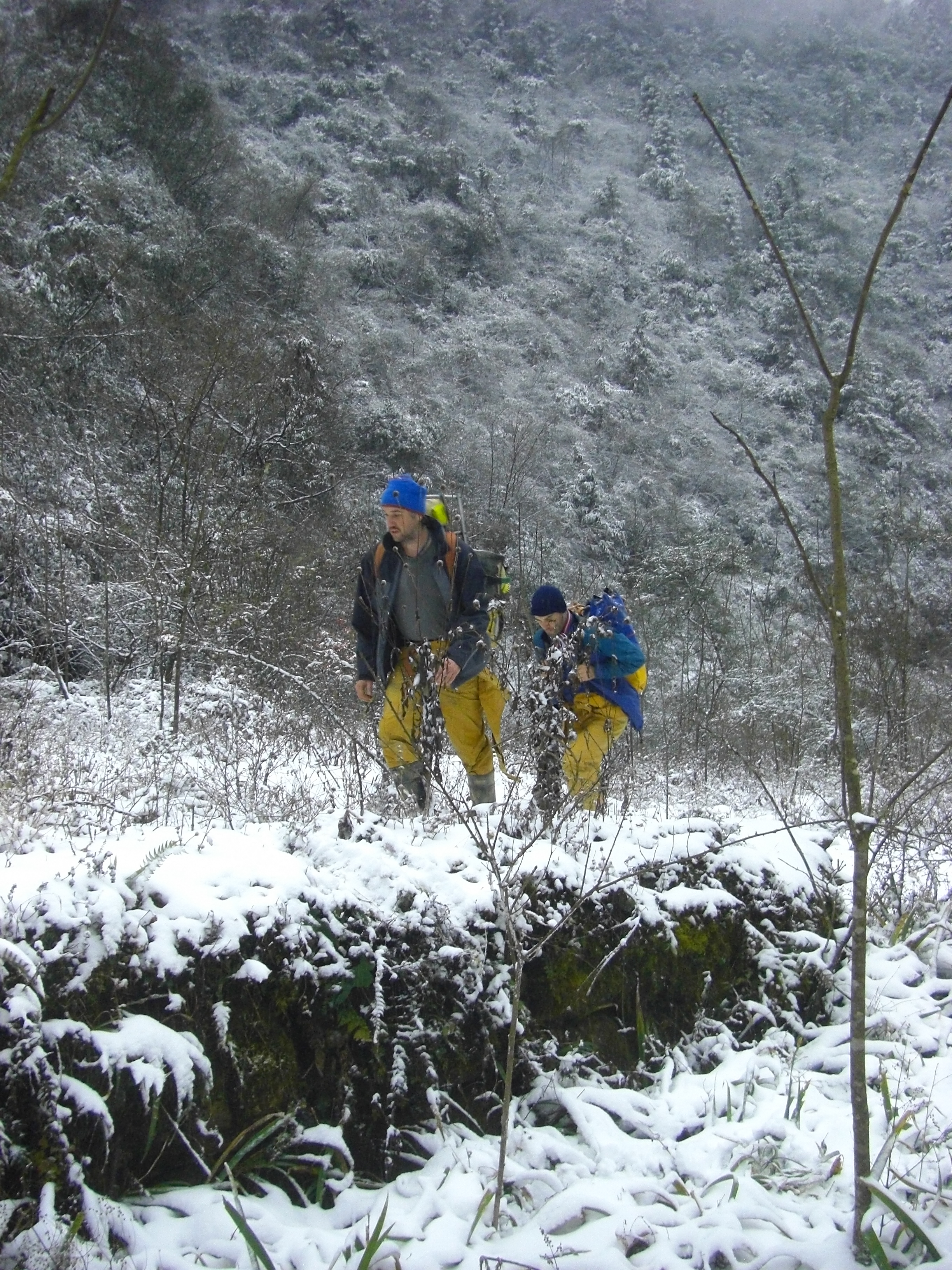
As the general manager working a turnaround job on an American engineering firm, the 25-year-old Gladieux was a slave to long days and longer weeks as an engineer. “Ostensibly, that was why I was in China,” said Gladieux. “From a different perspective, I was there because they have fantastic caves.” In the three and a half years he lived there, he managed to embark on 14 expeditions, most nearly a month long. One of his most memorable was an excursion to Yantangping (also known as Cave 127), which is nestled in a remote mountain valley in Wulong County, Chongqing.

As one of the few who had explored Cave 127 briefly, Gladieux knew the cave as well as anyone. So in December 2010, he enlisted two friends, British cavers and expats Duncan Collis and Rob Garrett, and the trio decided to push into the cave as far as they could.
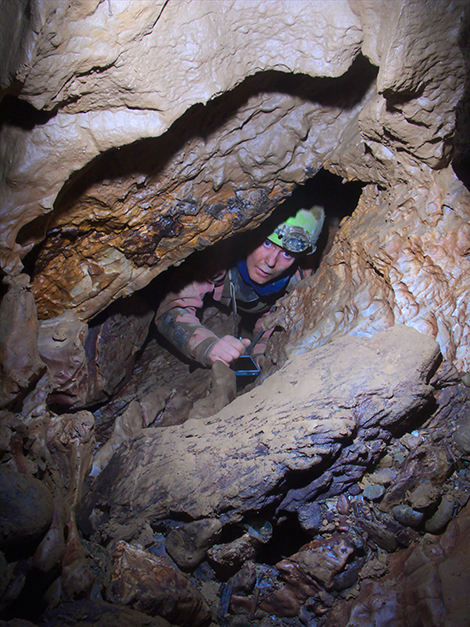
Into the Unknown
When entering a cave, explorers have no real idea what they’re getting into. In other types of exploration, of mountains or rivers, for example, you can see the goal, or at least have some idea of what it holds. Caving is unique, because even in a 21st-century world of satellite imagery and worldwide Internet service, when you’re venturing underground, you truly are going in blind. In the case of Cave 127, the entrance doesn’t do it much credit. Only a couple feet tall and a couple of feet wide, with a little dribble of water running into it, entering Cave 127 is no more grand than climbing into a storm drain. Upon entering, however, the cave immediately starts plummeting downward, pitch after pitch after pitch after pitch, into the bowels of the earth.

While 127 had been explored briefly prior, no team had overnighted in the cave before. It would be difficult to pack all their gear in with only three people, and because of how tight the cave was at points, the team needed to be as minimalist as possible. “A pack that was any bigger than a helmet wouldn’t fit,” said Gladieux. So each man was carrying two tiny, 35-pound packs, each as wide as a helmet and about two feet tall, in addition to a small rope bag of static line.
The men wore bright yellow PVC suits, the status quo apparel in caving at the time. These dry bag-like suits are great for keeping water out, but that goes both ways. All your sweat, and any water that gets in, stays in the suit with you. “If the cave is wet, even with a PVC suit you’re guaranteed at some point to look sideways or raise an arm,” said Gladieux, “and then a drip of water goes down your sleeve or neck and can’t get out of the suit, it’s in there with you for good.” It’s like wearing a Ziploc bag around your body. Clad in neon, watertight suits, their tiny, heavy bags of gear in tow, the men descended downwards.

“The cave was never pleasant,” said Gladieux. “It was cold, and wet, and just generally uncomfortable at all times.” It alternated between steep, vertical pitches and horizontal canyon-like passageways, where the men were forced to lay on their sides and wiggle, lugging their tiny, heavy packs with them. As they travelled deeper, the passageways progressively became worse and worse, tighter, muddier, and more difficult to navigate.
An early passage called Whale Song Rift, in the known section of the cave, (christened after Gladieux’s howls on a previous trip trying to navigate this section with a broken thumb), was stacked with bowling-ball sized cobbles. “These are distinctly awful to navigate when you’re pushing two 35-pound packs in front of you, lying on your side, and it's wet and tight,” said Gladieux, laughing. With up to ten inches of water in some parts of the passage, there was no way to avoid becoming completely soaked, the trapped water sloshing around inside one’s PVC suit for hours and hours afterwards.

At one point, they reached a rift ending in a tiny hole. “This space was so tight you couldn’t fit your chest through with a breath of air in your lungs,” said Gladieux, “much less a rappel device.” The men used slings to arrange their rap devices over their shoulders, exhaled, and then wiggled downwards one after the other, relying on the weight of their two packs to pull them through the tiny hole and into the shaft below.

Continuing deeper into the depths of 127, the trio arrived at the furthest known point, a devious passage called Riff Raff. Narrow at the top and bottom, one wall of this passage is tilted at 15 degrees, perfectly smooth, and covered in a sheen of snot-like mud. The other is layered with sharp, spiky rocks. The center of the passage, barely the size of a helmet, is the only area big enough for a person to pass through, and once one wiggles inside, one is too far from the floor or ceiling to push off of either to move forward. “You’re off-width arm-barring on a snot-slick surface to wedge your chest out enough just to move your torso three inches farther forward,” said Gladieux. “But at that point, the side of your face has been crushed into the 35-pound pack in front of you, which is wedged in tight between the walls, So now you have to punch the pack up with one arm before it falls back again, trying to inch it forward, all while your body is being held in place because your chest is being crushed by the rock wall on both sides.” Gladieux paused for a moment. “It’s a real peach,” he said, chuckling. “It’s so awful that you just have to laugh about it.” To top things off, at the end of the passage the ceiling lowered, so to pass the men had to lie completely on their sides, in eight inches of freezing cold water. This 30-metre section of cave took the group over an hour and a half to navigate.

They rapped down into another area with a flat tunnel extending into the darkness in both directions. On one side, the water falling from the end of the Riff Raff passage above them hit a knob and launched out into an enormous void. The team stood on this underground cliff edge and peered out into the blackness, unable to see anything to their left or right, and neither floor nor ceiling. The far wall was barely visible in the glow of their headlamps. They christened that end of the passage “The Wet Side” and headed in the other direction. Here, they reached a vertical pit, where Gladieux, Collis, and Gladieux’s future wife Johanna Kovarik had left a fixed rope on their last expedition, the farthest known push into the cave. Once they clipped into this rope, they’d be rappelling into uncharted territory.
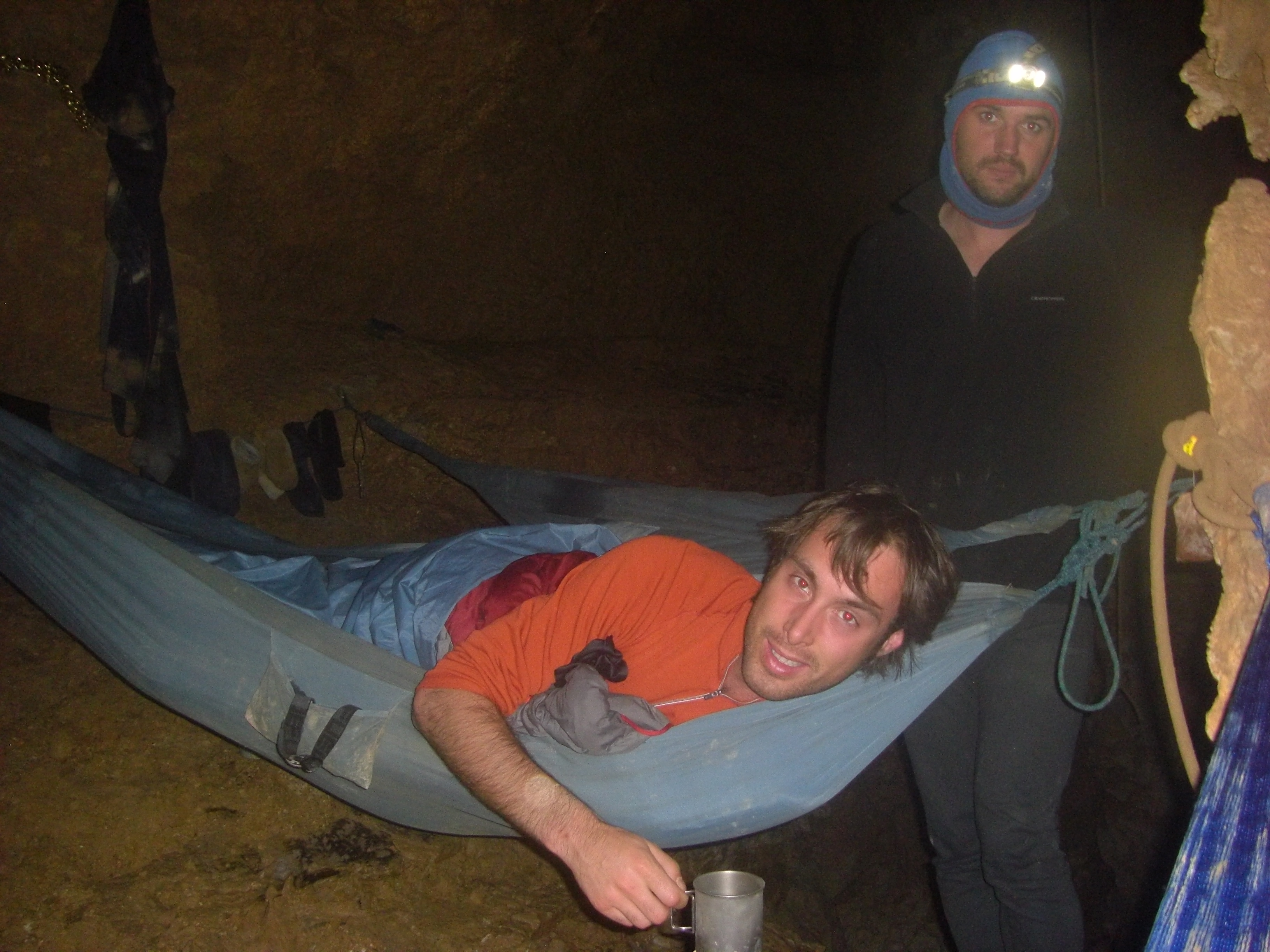
Down, Down, Down
The men began to descend into the darkness, not knowing when, or if, they’d reach a floor. They took turns with one man further down the rope, fixing more rap lines, while the other two followed. It was slow going. Because of how difficult it was to navigate through Riff Raff and the other passages, Gladieux and his friends hadn’t brought a hammer drill. To fix lines they were relying on SPITs, self-driving anchors that take 20 to 40 minutes each to place.
20 metres became 30, then 40, then 50, and soon 100, with no place to camp in sight. They passed holes in the walls running off into the darkness, alcoves, streams of water trickling in through slanting shafts, ever serenaded by the “ting, ting, ting” of the man fixing the rope hammering below them.
Finally, after hours upon hours of hand drilling, having descended over 200 vertical metres, they arrived at a floor with two small rooms. One was full of bone-dry gypsum crystals, and not flat enough for a decent camp. The other room had a small drip of water, so the team decided to set up base camp there. They strung up some tinsel and christened the site, “Christmas Camp.”
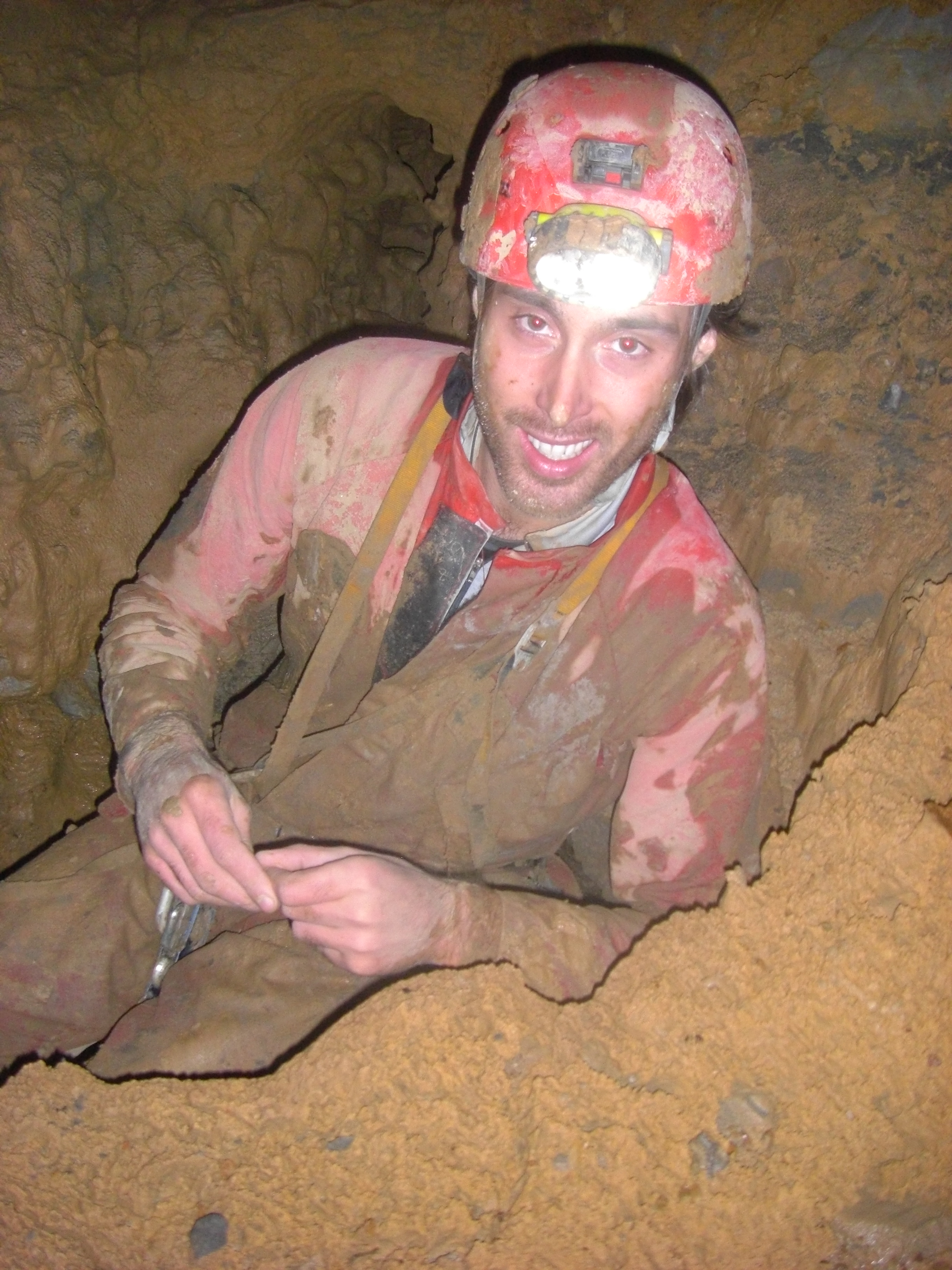
“It was like a Christmas present, finding that campsite after so long,” said Gladieux. “A Christmas present for someone with very low standards,” he added, laughing. “We were desperate.” The men were in a tiny, tight room, hundreds of metres underground, with a floor consisting of ten inches of mud. The mud in this room was so deep and sticky, Gladieux said, that you could barely step without losing a boot, and each step was accompanied by a mucking, sucking noise akin to the monster in the trash compactor on the Death Star in Star Wars.

They men up their hammocks all around a central pillar, “which was nice, since we didn’t have to spend twenty minutes drilling,” said Gladieux, “but also, every time anyone moved it pulled on that central webbing, and we all jiggled in our hammocks.” The men were short on hammocks, so Garret had grabbed a spare hammock from Gladieux, a tiny, mesh net without a spreader bar. “It was too small for [Rob’s] shoulders, so within minutes it would basically end up as a rope thong running between his shoulder blades down through his buttcrack, and he’d fall out of it into the mud,” said Gladieux. To remedy this, Gladieux and Collis tied Garret into his hammock each night, from his hands to his feet, with cordelette. He was so tightly trussed that he couldn’t even get out to go to the bathroom without their help.
What’s more, the small drip of water that had convinced them to camp in this site, just a few metres from their hammocks, was both the only spot to relieve themselves (as the water would somewhat wash away their feces) and the only spot to collect water to cook with. So they set a couple small pots to collect water right next to their pile of defecate. “You could just about pass somebody paper from your hammock while they were doing their business,” said Gladieux. Tight quarters.
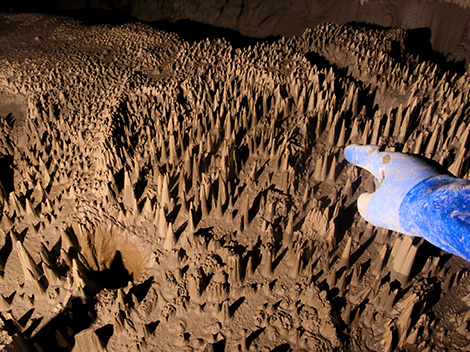
Searching for the End
The team awoke the next day to take stock of their surroundings. With most of their rope used up on the long descent, only 200 metres of Chinese 8mm semi-static line remained. (Before the trip, they had tested this spare rope out at home, with Collis weighting it while Gladieux held the blade of a knife up to it. “I touched the blade to it and the entire rope immediately parted in half,” said Gladieux.)
It wasn’t the stoutest rope, but “it was the only choice we had,” he said. “We couldn’t fit thicker rope in those helmet-sized bags. Of course, just like the early Yosemite folks using Goldline, we had a choice. We could’ve just not gone in the first place.”

But they went, and Cave 127 wasn’t going to turn them back. So they took their hand bolts and shoelace rope and continued downward. The passage kept spiraling like a corkscrew, down and down and down (they aptly named it “The Downward Spirals”). Throughout the day, the trio put in forty-five bolts. One guy led the way with the tackle sack and the bolt kit, rigging the pitches, while the other two mapped the passages as they went. “Since the oceans that formed that limestone, and the rains that created that cave, no light had ever touched those rock surfaces,” said Gladieux. “Everything was pristine, fresh, new.”
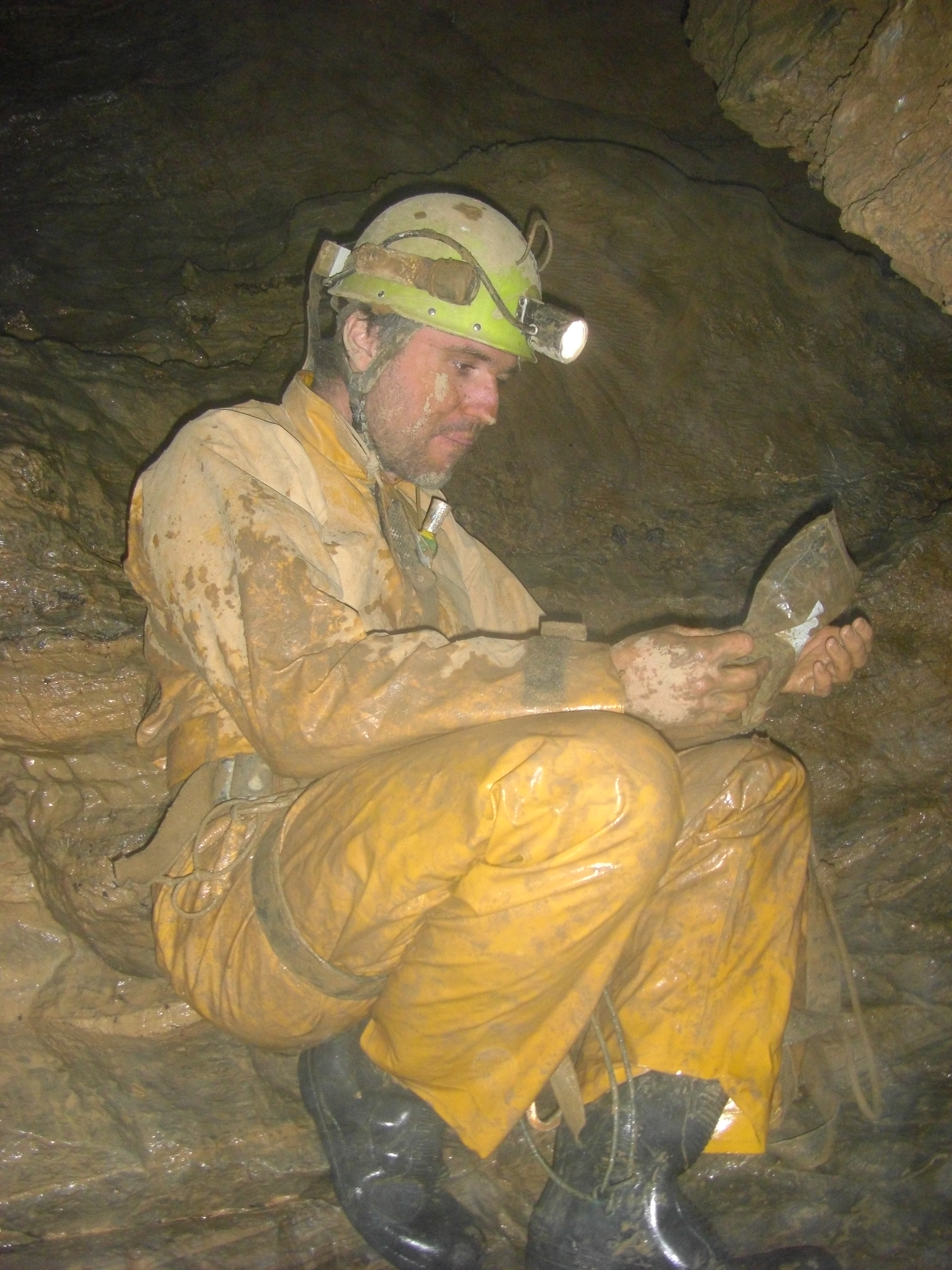
The rock slowly became filled with silicate, and harder, to where it sparked in the darkness while they hammered. They followed a draft (an indication that the cave continued) for hours and hours, deeper and deeper. Eventually, 500 metres deep, the team ran out of bolts above a room. They anchored in with three suspect chickenheads and rapped down to a mud floor. The cave didn’t go. There was no passage out, no way onward. But just 20 metres higher they’d felt a draft. Where was it coming from?
Inspecting the walls, they found a small fissure four metres up a sidewall which was whipping out air. “It was bedrock on all sides, and only four to six inches wide,” said Gladieux. “There was no way in. Some expeditions might have chemically persuaded that rock, but we had no way to do that,” said Gladieux. There were plenty of other passageways, but the team was out of rope and bolts. The “Wet Side” and the other smaller passageways would remain virgin. They spent two more nights in the cave, then headed back to the surface. “All in all, the experience was somewhat miserable, somewhat fantastic, and slightly comic,” said Gladieux.
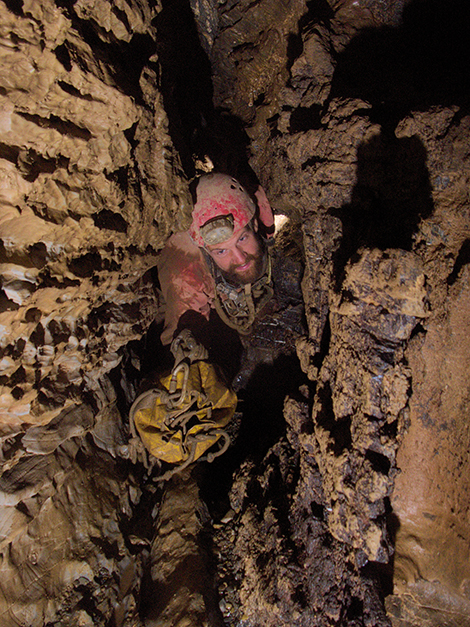
The uncharted passageways and puzzles of Cave 127 still hold plenty of possibilities, though. “Just a kilometre away from 127 is the largest cave system in China,” Gladieux said. “The thought of connecting the two… well, it would be an incredible achievement.”
A Process of Discovery
“Caving today is like what climbing was 70 years ago,” he added. “Now climbing is more of an athletic process, but it used to be more about furthering science, discovery. In caving, we discover new species every year, the charting of underground water flow helps protect our water sources, there’s so much we can give to the world. The depth of the earth are also some of the last truly wild places to explore. In other disciplines of exploration, self-reliance has been cheapened by satellite phones and on-call heli evacs. If you’re in a cave and you get into deep shit, you better be able to claw your way out. Even a broken ankle in a relatively easy cave can wind up turning a simple outing into a days-long evacuation process.
“Caving is also beautiful because it’s a three-dimensional movement,” said Gladieux, “a dance where you’re not tied to the floor. I love the feeling of moving my body in all the ways it can, solving puzzles of how a human body can fit through a space.”
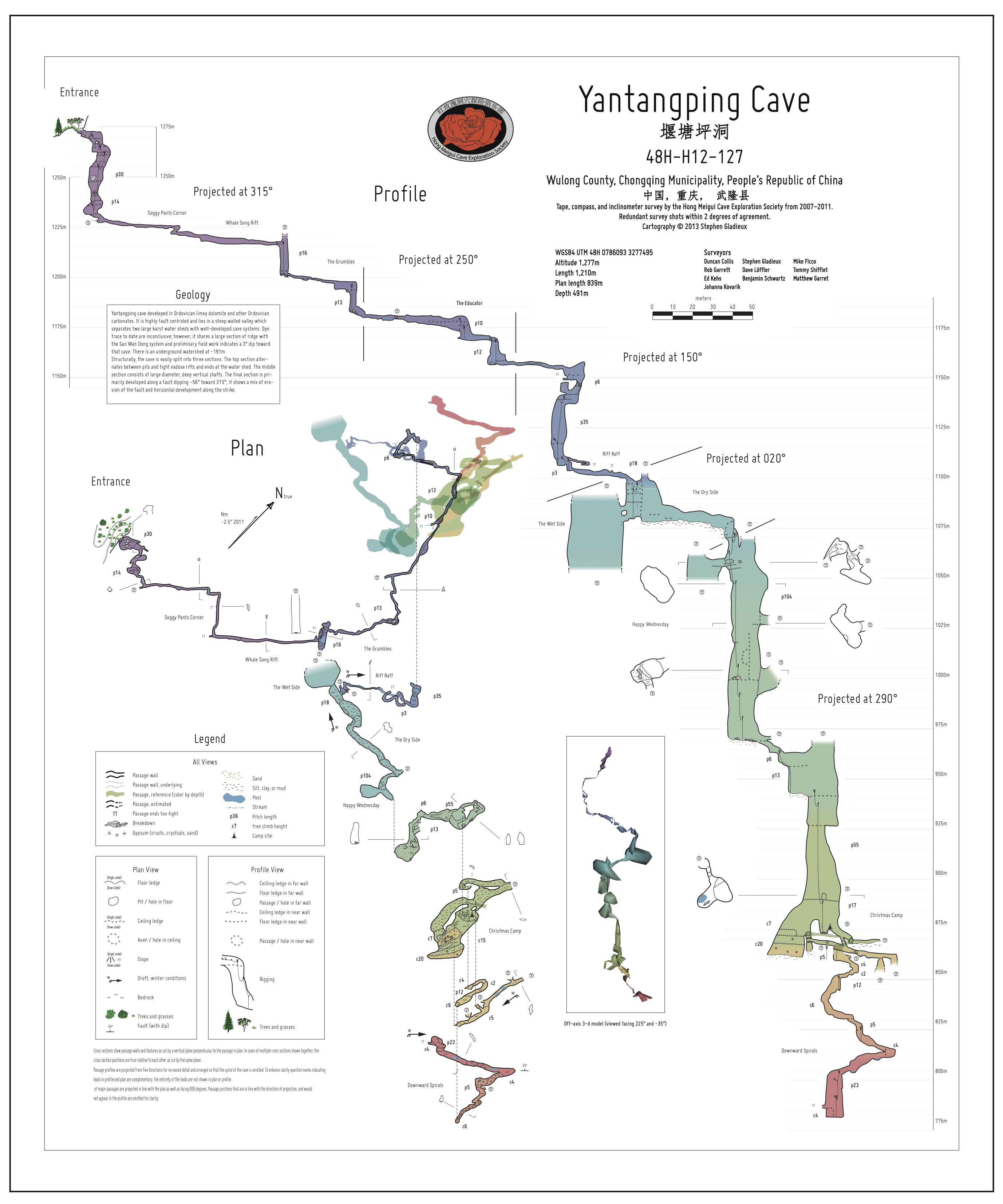
No matter the physical obstacles and puzzles, “the biggest challenges in a cave are always psychological,” he said. “They tend to be with newer cavers or teams who haven’t all been together before. Cavers who have been around a long time… there’s almost no limit to the amount of utter horribleness that they can handle and keep a smile.”
Even with a veteran team like his partners in 127, there are plenty of methods Gladieux uses to raise spirits, from singing ballads and chanteys to bringing a stash of chocolate. “Most people,” he added, “are out of touch with the depths of endurance and fortitude that a human body and mind can go through. It’s self-constructed terror that makes you freak out, thinking ‘I can’t handle one more thing,’ but you can. You always can.”
But, according to Gladieux, he doesn’t cave to challenge himself, physically or mentally. “I cave because I want to share that moment, that discovery of a new space, with my friends and with the world. The maps, the greater understanding of geology, all the new knowledge, I want to give that to posterity.”
Owen Clarke is an outdoor and travel journalist based in Colorado. He is a columnist for Rock & Ice, The Outdoor Journal, and Gym Climber, and has written for brands and organizations including Petzl, Black Diamond, Arc’teryx, Outdoor Research, Access Fund, and Trango. Check out his other work on his website, and follow him on Instagram @opops13.





Comments ()